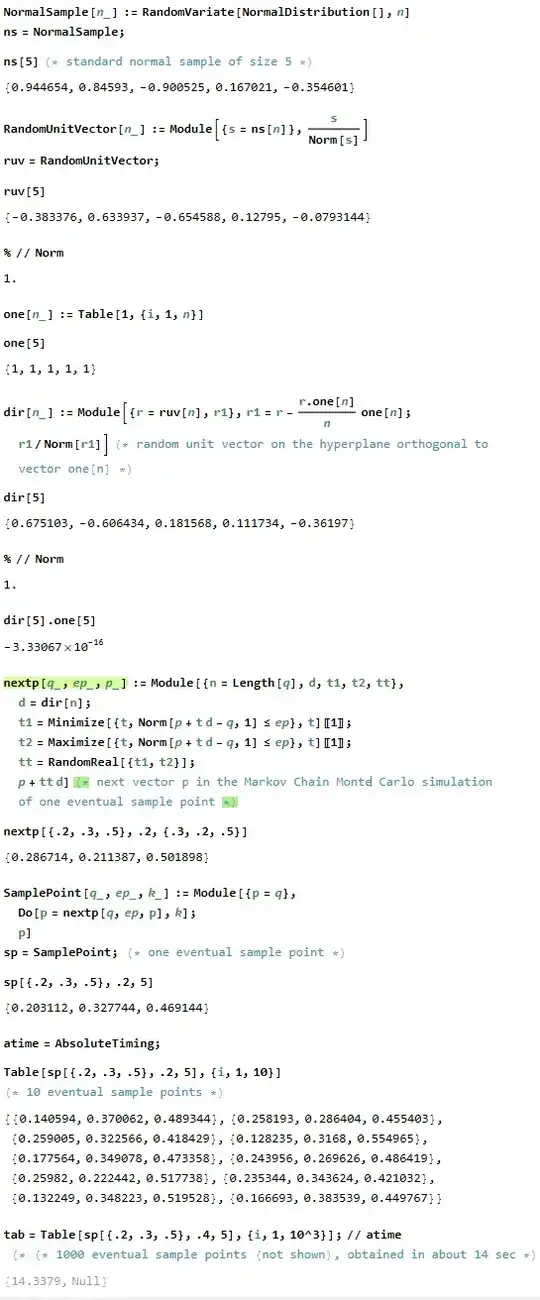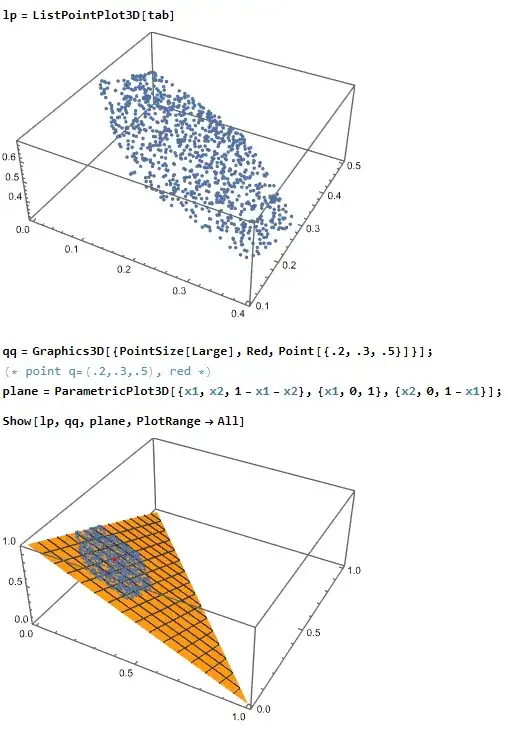I am looking for some reference or an algorithm that allows to sample uniformly in the ball centered at a discrete random variable of n modalities in the TV distance.
For the record for 2 discrete random variables the total variation distance between them is defined by : $$d_{TV}(X,Y)= \sum _{i=1}^{n} |p_i-q_i|$$ where the laws of X and Y are defined by the vectors $(p_1,...,p_n)$ and $(q_1,...,q_n)$ with $ \sum _{i=1}^{n} p_i=1$ and $ \sum _{i=1}^{n} q_i=1$
This is not as simple as it may look but quite natural problem though but I couldn't find any reference for this problem.
Edit : I will try to clarify the problem, the objective is to sample in the space of discrete random variables with $n$ modalities not sampling from those random variables. Any point in this space is thus characterized by the n dimensional vector of their law i.e. $p=(p_1,...,p_n)$ such that $ \sum _{i=1}^{n} p_i=1$. This space is endowed with the total variation distance defined above. For a fixed point $X$ or alternatively $p$ in this space I can define a ball with respect to this metric for some $0\leq\epsilon\leq 1$ (even though the case $\epsilon= 1$ is the whole space unless mistaken).
So once I have fixed $p$ and $\epsilon$ I am looking to sample uniformly in this ball, to get $\tilde{q}$. For the $\epsilon= 1$ case I think that a Dirichlet law with parameters $(1,...,1)$ might do the trick because unless mistaken it allows to sample uniformly over the $n-simplex$ but for the restricted case of a non trivial ball I am a bit confused and do not have a clue how to make a sampling algorithm that might just do the trick.

